What you can read clearly here, but over 1.6 million American's can't, is an article on the world's smallest telescope. Smaller than a pea, this teeny tiny telescope is helping people with Age-related Macular Degeneration (AMD) improve their vision and their lives.
People with AMD have large black spots that obscure and cloud their central vision. As the baby boomer population ages, there will be more people like Willis "James" Hindman, who at 77 was robbed of his ability to read, see the faces of his friends and family or to watch his horses. As the founder and former CEO of Jiffy Lube International, James was devastated by the loss of his vision. For a man who had never been held back previously, the loss of vision severely limited his ability to enjoy life.
This is how people with Macular Degeneration see the world. Blurry around the edges and lost in the middle. Imagine how difficult it is to function with such severely limited vision.
Up until recently there wasn't much that could be done for people with such severely limited vision from AMD. They could try magnifying glasses or hand-held telescopes, but these are cumbersome and can only offer small improvements. Now, thanks to technological advances in microsurgery and space-age breakthroughs, people like James with AMD have new hope from the world's tiniest telescope that's implanted into the person's eye.
At present, there is no cure for progressive or end-stage AMD. However, through surgery and specialized eye rehabilitation after the procedure, people like James Hindman are learning how to see again. James is starting to feel that he has "a new lease on life" as he masters seeing the world again through the telescope. Being able to watch sports again on the TV is thrilling, as is walking the 75 yards from his house to his office without counting steps. He can even see the soap and shampoo in the shower, as long as the soap stays out of his eyes. James' improved vision has inspired him to make further contributions to his family, community and business.
After reading about new bionic breakthroughs in medicine on The Huffington Post, I became intrigued and started looking into this astounding breakthrough that literally helps the blind see again.
I found this video that explains normal vision, how AMD is different and how the telescopse works. In addition, there's information about how people can find out if they are a candidate for this surgical procedure.
Medicare recently approved the telescopic implant and now there are more than 50 locations across the country performing the procedure.
Disclosure: The author has no relationships with VisionCare, the Centrasight technology or any surgeons or hospitals performing the procedure. I'm writing about this because it's an incredible breakthrough that promises to improve people's vision and their lives.
For more by Barbara Dehn, click here.
For more health news, click here.